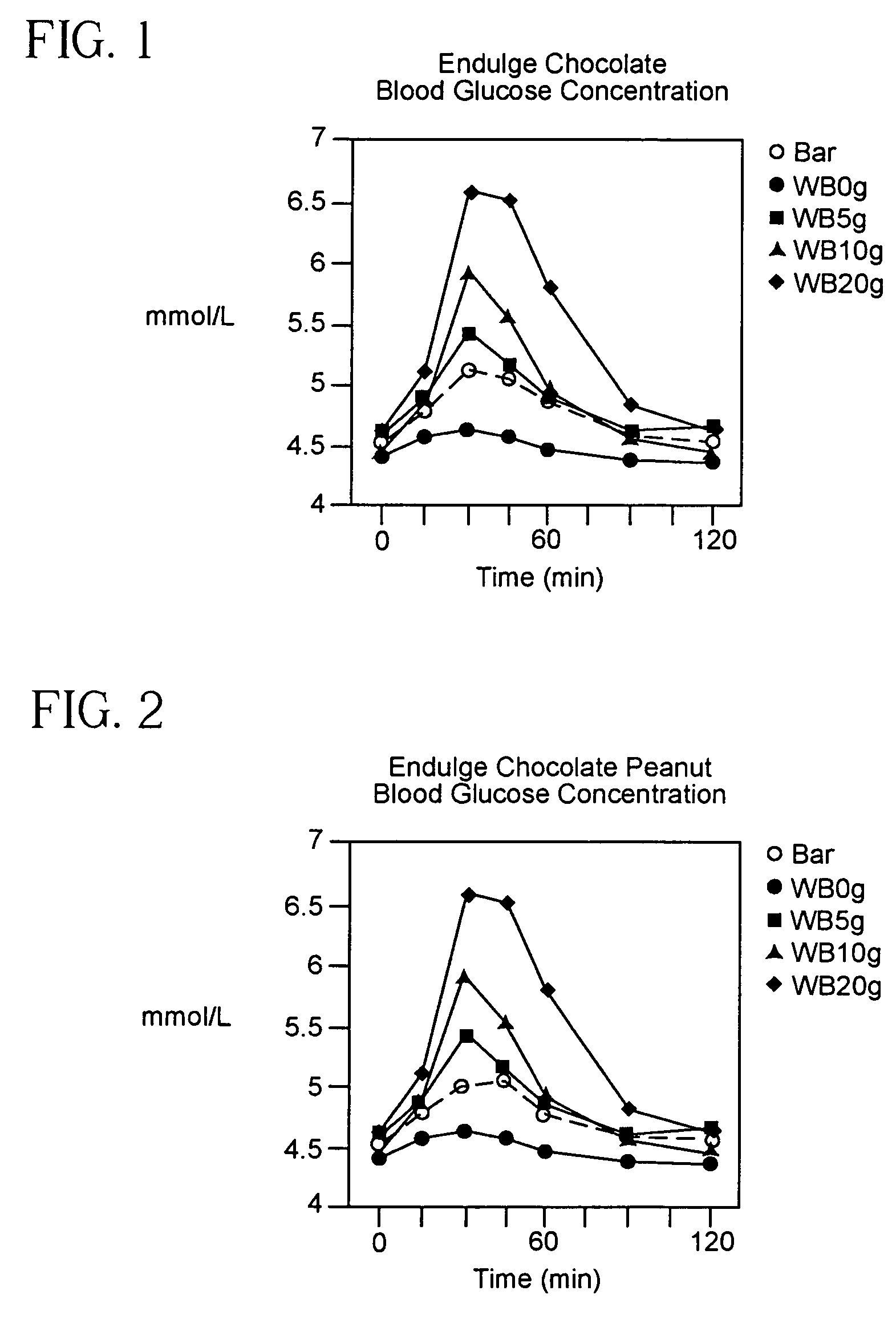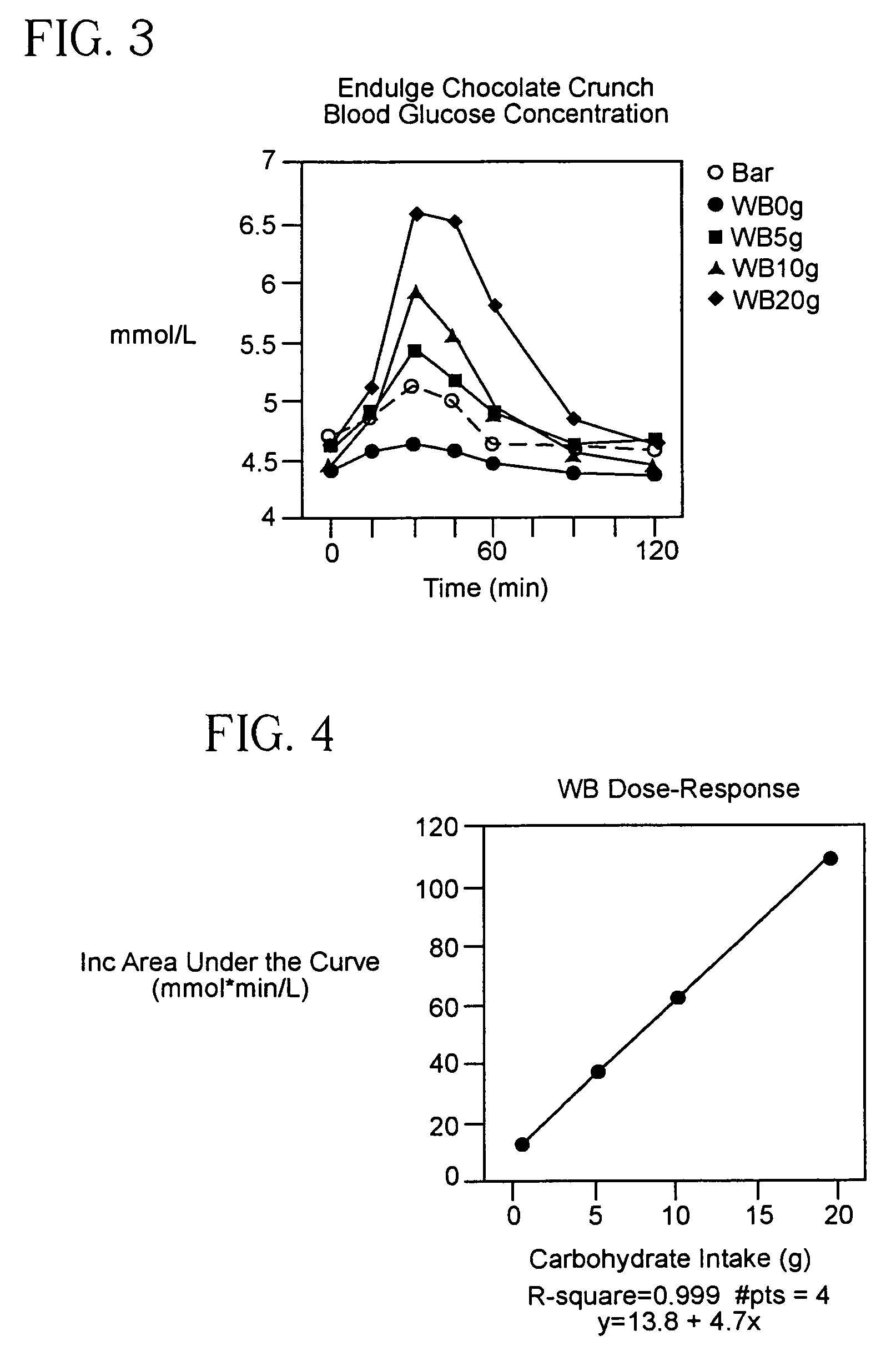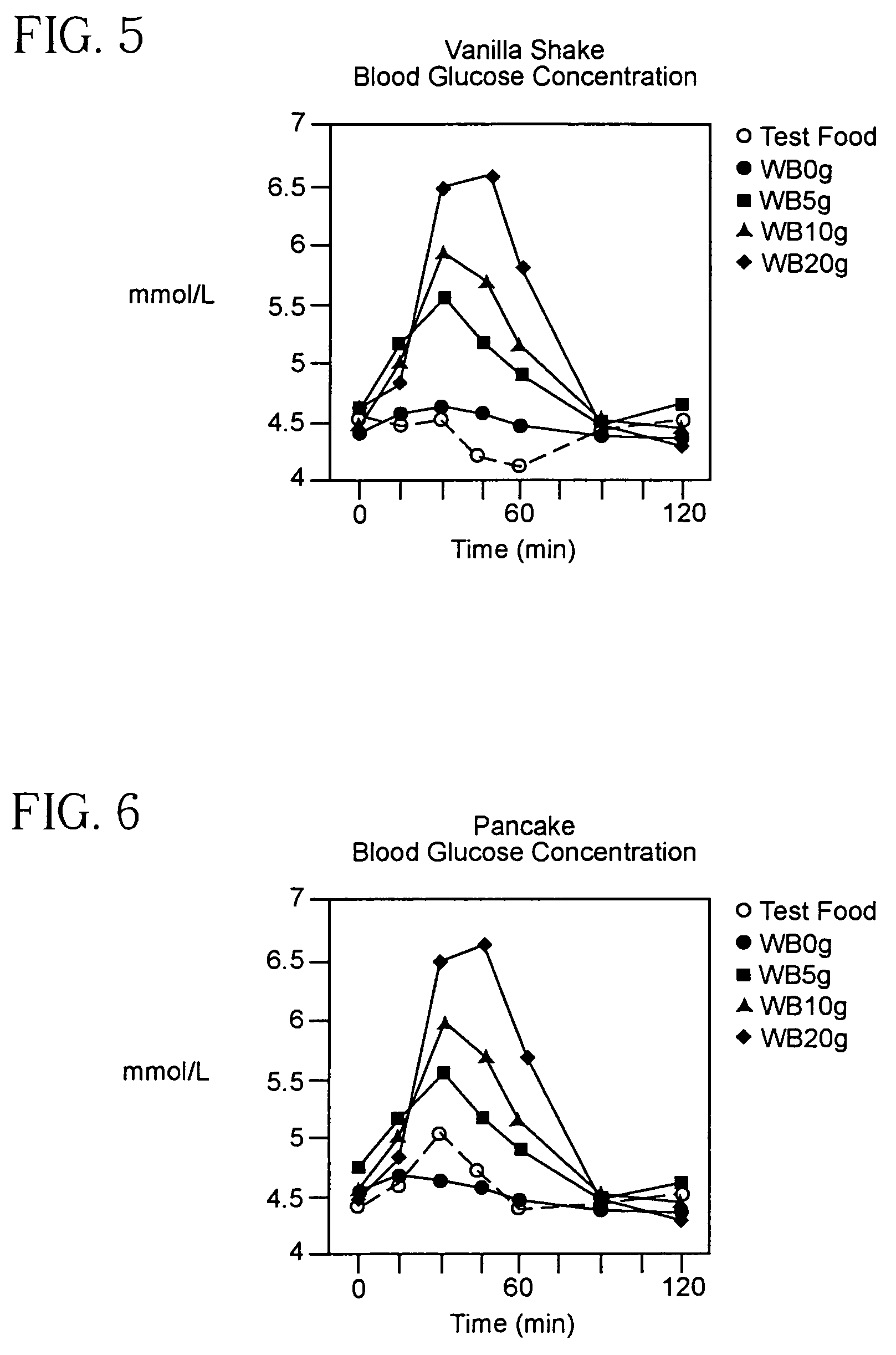Methods and systems for determining and controlling glycemic responses
a glycemic response and glycemic technology, applied in the field of glycemic response determining and controlling glycemic response, can solve the problems of life-threatening consequences, inability to accurately measure food components, and long glucose in the blood, so as to avoid inaccuracies and complications, narrowly control the glycemic response, and easy implementation
- Summary
- Abstract
- Description
- Claims
- Application Information
AI Technical Summary
Benefits of technology
Problems solved by technology
Method used
Image
Examples
example 1
[0174]The glycemic responses of 1 serving (1 bar=30 g) of Atkins' Endulge Chocolate, Endulge Chocolate Peanut and Endulge Chocolate Crunch bars were determined in 10 healthy subjects (4 male, 6 female; 39±5 years of age; body mass index 23.4±0.9 kg / m2), relative to the response from white bread. Each subject was studied on 7 occasions in the morning after 10-14 h overnight fasts. On each occasion, each subject consumed a test meal. One of the test meals consisted of a standard drink alone. The standard drink did not contain glycemic carbohydrate. Three of the test meals consisted of one type of bar and the standard drink. Three of the test meals consisted of white bread containing a particular amount of glycemic carbohydrate, i.e. 5 g, 10 g or 20 g; and the standard drink. The glycemic responses of each subject were determined after each test meal.
[0175]The dose response curve for bread allowed calculation in each subject of the extent to which 1 g glycemic carbohydrate from bread r...
example 2
[0196]The glycemic responses of 1 serving (1 bar=30 g) of Endulge Chocolate Almond Bar, 1 serving (1325 ml can) of Vanilla Shake, 1 slice (28 g) of Atkins' White Bread, 1 slice (28 g) Atkins' Rye Bread, 1 serving of Quick & Easy Pancakes and 1 serving of Quick & Easy Blueberry Muffins were determined in 10 healthy subjects (4 male, 6 female; 36±6 years of age; body mass index 22.8±0.8 kg / m2), relative to the response from white bread. Each subject was studied in the morning after 10-14 h overnight fasts. In addition to a standard drink plus the 6 test products, the glycemic response of each subject was determined after the standard drink alone and the drink plus 5, 10 and 20 g glycemic carbohydrate portions of white bread. The incremental area under the glycemic response curve (IAUC) increased in a linear fashion as the amount of carbohydrate consumed from bread increased from 0 to 20 g, with the correlation coefficient (R) being >0.95 in 6 of the 10 subjects. The regression equatio...
example 3
[0217]The glycemic responses of 1 serving (1 bar=60 g) of Advantage Mocha Bar, Advantage Frosted Cinnamon Swirl Bar, and Advantage Almond Brownie bar and 1 serving (1325 ml can) of Chocolate Delight Shake were determined in 10 healthy subjects (4 male, 6 female; 36±6 years of age; body mass index 22.8±0.8 kg / m2), relative to the response from white bread. Each subject was studied on 8 occasions in the morning after 10-14 h overnight fasts. In addition to a standard drink plus the 4 test products, the glycemic response of each subject was determined after the standard drink alone and the drink plus 5, 10 and 20 g glycemic carbohydrate portions of white bread. The incremental area under the glycemic response curve (IAUC) increased in a linear fashion as the amount of carbohydrate consumed from bread increased from 0 to 20 g, with the correlation coefficient (R) being >0.95 in 6 of the 10 subjects. The regression equation of mean IAUC on dose of carbohydrate (d) was:
IAUC=4.86d+12.3(r=0...
PUM
| Property | Measurement | Unit |
|---|---|---|
| concentration | aaaaa | aaaaa |
| concentration | aaaaa | aaaaa |
| concentrations | aaaaa | aaaaa |
Abstract
Description
Claims
Application Information
 Login to View More
Login to View More - R&D
- Intellectual Property
- Life Sciences
- Materials
- Tech Scout
- Unparalleled Data Quality
- Higher Quality Content
- 60% Fewer Hallucinations
Browse by: Latest US Patents, China's latest patents, Technical Efficacy Thesaurus, Application Domain, Technology Topic, Popular Technical Reports.
© 2025 PatSnap. All rights reserved.Legal|Privacy policy|Modern Slavery Act Transparency Statement|Sitemap|About US| Contact US: help@patsnap.com



